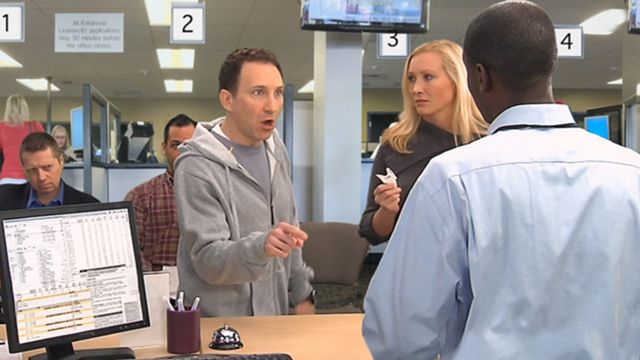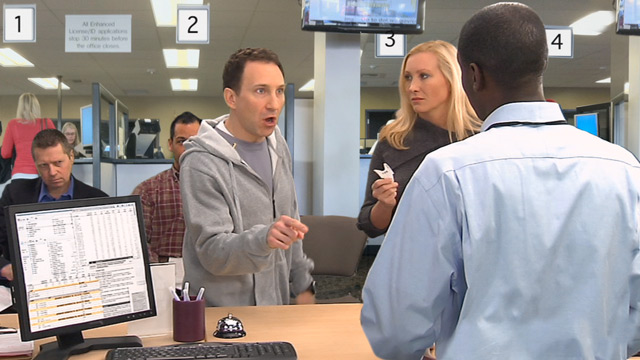3 Signals to Send When Handling Upset Customers

As this short clip shows, it’s hard to know what to say when challenged by an upset customer.
While the specific words we say may differ based on the situation, here’s some general information that can help. It’s all about sending the right signals:
Signal 1: I Care
Words: I’m sorry
Actions: Listen
The words “I’m sorry” have a powerful way of disarming people who feel slighted or wronged in some way. Think about a time when you’ve been an upset customer yourself, and what it meant to hear the merchant or supplier offer an apology. For most of us, it instantly diffuses the tension we feel.
Some people resist saying “I’m sorry” because it feels like they’re saying “I was wrong” when they feel they haven’t done anything wrong. In service recovery situations, though, saying “I’m sorry” isn’t about personally accepting blame, you’re simply apologizing for the situation; apologizing that the customer is upset about something.


Listening signals that you’re giving the customer your undivided attention (plus, allowing them to vent helps calm them). An upset customer needs to be heard. So, apologize. Then, be quiet and do your best to keep your own emotions out of it.
Signal 2: I Understand
Words: I understand
Actions: Eye contact, patience, and a sincere tone of voice
After you show your customer you care by saying you’re sorry and listening, you want to convey concern for their situation and empathy for what they’re feeling.
Saying things like, “I can certainly understand why you need this addressed", or “I can see how that would be frustrating” does two things: 1) It tells the customer you are trying to see things from their perspective and 2) it puts you in the customer’s shoes, which helps motivate you to find an acceptable solution.


Signal 3: You Can Trust Me to Take Care of This
Words: Let me look into this for you.
I can handle this for you.
I will make sure we fix this for you.
Actions: Make statements you can deliver on. Use permission phrases (like the ones listed below) to give the customer an idea of what will happen next.
Exactly what you can offer customers as a remedy is specific to each situation. The operative words when signaling You Can Trust Me to Take Care of This are “for you”. The words “for you” are key to building trust, and they let the customer know you will be working on their behalf. Part of earning trust, though, is to be careful not to overpromise. Be clear on what you may or may not be able to deliver.


Use permission phrases to ensure that the frustrated customer knows you’re not just paying lip service to solving their problem (this helps keep them calm if they’re still feeling out of control in some way). Permission phrases include things like: Would you be willing to..? Would it be alright if…? If it’s acceptable to you, I will…





